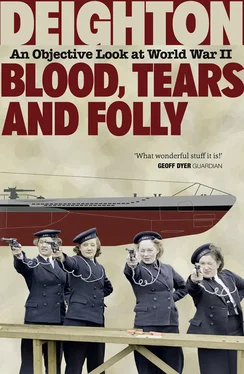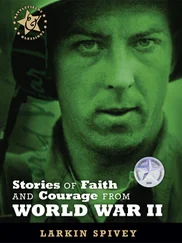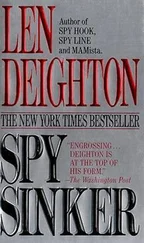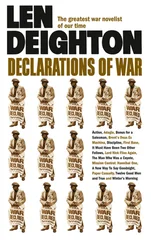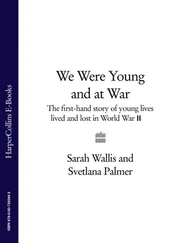One good reason for looking again at the Second World War is to remind ourselves how badly the world’s leaders performed and how bravely they were supported by their suffering populations. Half a century has passed, and the time has come to sweep away the myths and reveal the no less inspiring gleam of that complex and frightening time in which evil was in the ascendant, goodness diffident, and the British – impetuous, foolish and brave beyond measure – the world’s only hope.
PART ONE
1
BRITANNIA RULES THE WAVES
For the bread that you eat and the biscuits you nibble,
The sweets that you suck and the joints that you carve,
They are brought to you daily by all us Big Steamers
And if any one hinders our coming you’ll starve!
Rudyard Kipling, ‘Big Steamers’
It is not in human nature to enshrine a poor view of our own performance, to court unnecessary trouble or to wish for poverty. Myths are therefore created to bolster our confidence and well-being in a hostile world. They also conceal impending danger. Having temporized in the face of the aggressions of the European dictators, Britain went to war in 1939 without recognizing its declining status and pretending that, with the Empire still intact, the price of freedom would not be bankruptcy.
In 1939 the British saw themselves as a seafaring nation and a great maritime power, but the two do not always go hand in hand. In order to understand the Royal Navy’s difficult role in the Atlantic in the Second World War, it is necessary to return to the past and separate reality from a tangled skein of myth. Later in the book similar brief excursions will give historical perspective on the performance of the army and the air force, both in Britain and in the other main wartime powers.
After the Renaissance it was Portuguese and Spanish sailors who led the great explorations over the far horizons, while the English concentrated upon defending the coastline that had insulated them from the rest of Europe for centuries. By the middle of the sixteenth century Spain and Portugal had established outposts in America, Asia and Africa, and their ships carried warriors, administrators and freight around the globe in 2,000-ton ships made in India from teak and in Cuba from Brazilian hardwoods. But when England’s shores were threatened, small and less mighty vessels made from English oak and imported timber, sailed by skilful, intrepid and often lawless Englishmen, came out to fight. Using fireships, and helped by storms and by the hunger and sickness on the Spanish vessels, Francis Drake and his men decimated the mighty Armada.
Such dazzling victories have prevented a proper appreciation of the maritime achievements of our rivals. While English privateers were receiving royal commendations for preying upon the Spanish galleons from the New World, the Dutch and the Portuguese were fighting on the high seas for rule of the places from which the gold, spices and other riches came.
The Dutch were an authentic seafaring race. They had always dominated the North Sea herring fishing, right on England’s doorstep, and traded in the Baltic. Their merchant ships carried cargoes for the whole world. By the early 1600s one estimate said that of Europe’s 25,000 seagoing ships at least 14,000 were Dutch. The English sailor Sir Walter Raleigh noted that a Dutch ship of 200 tons could carry freight more cheaply than an English ship ‘by reason he hath but nine or ten mariners and we nearer thirty’.
In 1688 the Dutch King William of Orange was invited to take the English throne. Dutch power at sea was subordinated to English admirals. At this time England had 100 ships of the line, the Dutch 66 and France 120. England’s maritime struggles with the Netherlands ended, and France – England’s greatest rival and potential enemy – was outnumbered at sea. The French were not a seafaring race, they were a land power. Their overseas colonies and trade were not vital to France’s existence. Neither were exports vital to England, where until the 1780s the economy depended almost entirely upon agriculture, with exports bringing only about 10 per cent of national income.
The Dutch king’s ascent to the English throne was the sort of luck that foreigners saw as cunning. It came at exactly the right moment for England. From this time onwards the French seldom deployed more than half of the Royal Navy’s first-line strength. Soon the industrial revolution was producing wealth enough for Britain to do whatever it pleased. But that wealth depended upon the sea lanes, and the Royal Navy had to change from a strategy of harassing and plundering to escorting and protecting merchant shipping. It was not easy to adapt to the shepherd’s role. The Royal Navy was by tradition wolflike; its speciality had always been making sudden raids upon the unprepared. ‘It could be fairly said,’ wrote the naval historian Jacques Mordal, ‘that with the exception of Trafalgar, the greatest successes of the British navy were against ships at their moorings.’ 1Damme, Sluys, La Hougue, the Nile, Copenhagen, Navarino and Vigo Bay were all such encounters. So were the actions against the French navy in 1940.
It was Napoleon’s defeat at Waterloo that gave the Royal Navy mastery of the seas. France, Holland and Spain, weakened by years of war, conceded primacy to the Royal Navy. Britain became the first world power in history as the machines of the industrial revolution processed raw materials from distant parts of the world and sent them back as manufactured goods. Machinery and cheap cotton goods were the source of great profits; so were shipping, banking, insurance, investment and all the commercial services that followed Britain’s naval dominance. The British invested abroad while Britain’s own industrial base became old, underfinanced, neglected and badly managed, so that by the mid-nineteenth century the quality of more and more British exports was overtaken by her rivals. Manufacturing shrank, and well before the end of the century service industries became Britain’s most important source of income. The progeny of the invincible iron masters dwindled into investment bankers and insurance men.
To cement the nineteenth century’s Pax Britannica Britain handed to France and the Netherlands possessions in the Caribbean, removed protective tariffs and preached a policy of free trade, even in the face of prohibitive tariffs against British goods and produce. The Royal Navy fought pirates and slave traders, and most of the world’s great powers were content to allow Britain to become the international policeman, especially in a century in which restless civil populations repeatedly threatened revolution against the existing order at home.
The British fleet showed the flag to the peoples of the Empire in five continents and was a symbol of peace and stability. Well-behaved children of the middle classes and workers too were regularly dressed in sailor costumes like those the British ratings wore. 2But appearances were deceptive. The Royal Navy was unprepared for battle against a modern enemy.
As the nineteenth century ended the importance of the Royal Navy was diminishing. Population growth, and efficient railway networks, meant that armies were becoming more important than navies. The new-found strength that industrialization, much of it financed by Britain, had given to other nations ended their willingness to let Britain play policeman. Although in 1883 more than half of the world’s battleships belonged to the Royal Navy, by 1897 only two of every five were British 3and countries such as Argentina, Chile, Japan and the United States had navies which challenged the Royal Navy’s local strength.
Читать дальше
